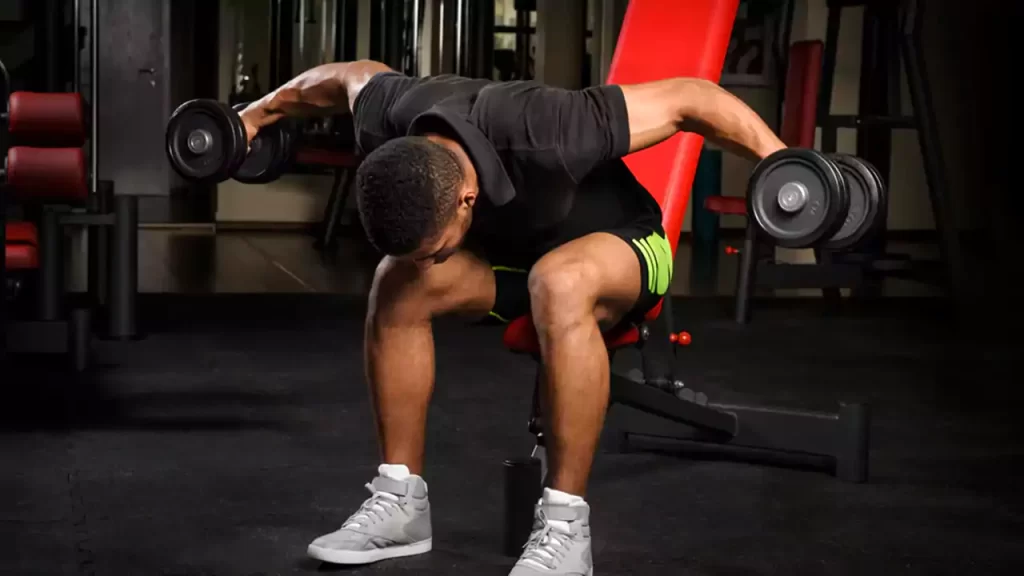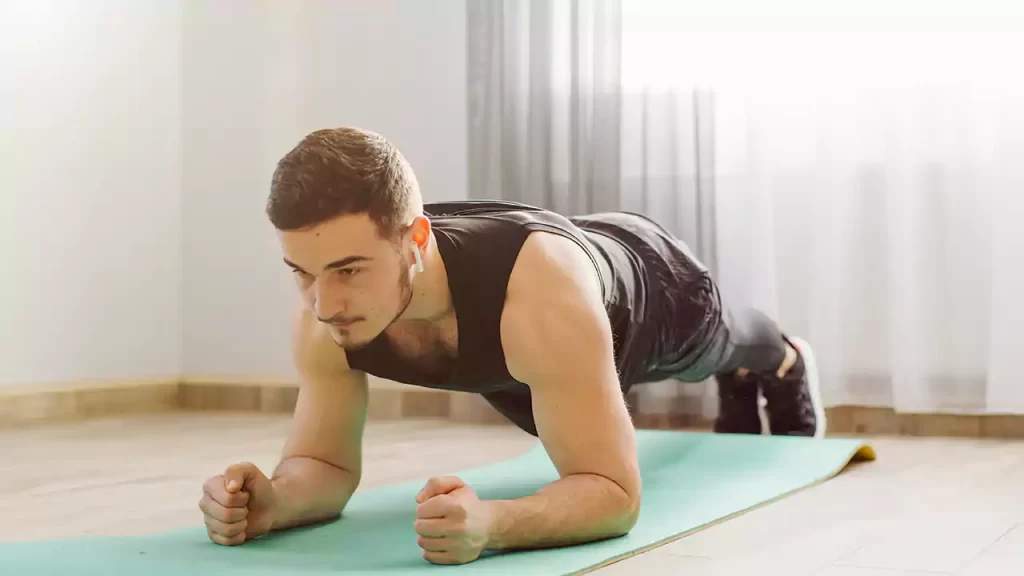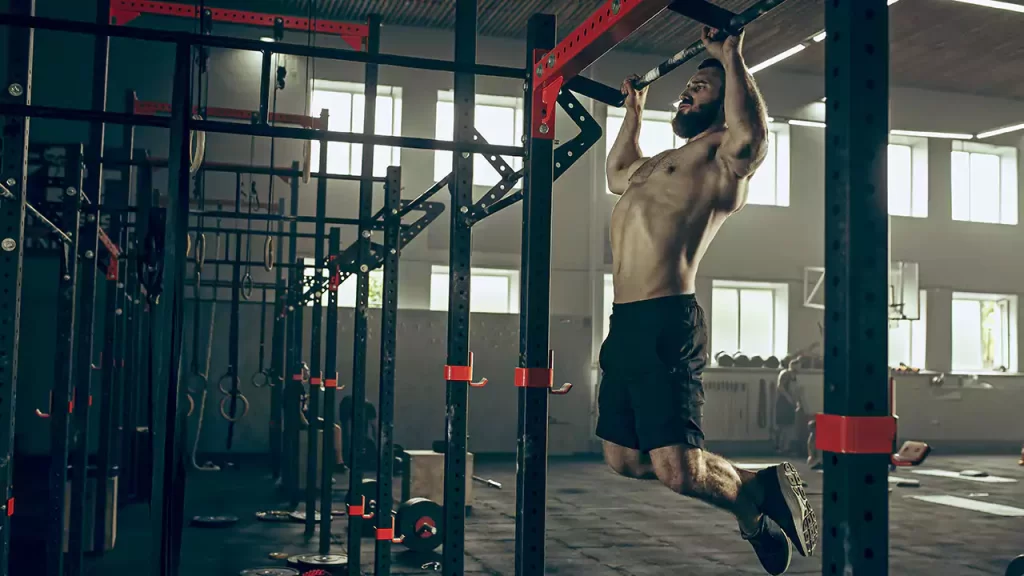
Greetings, fitness enthusiasts! Today, we’re delving deep into an often-overlooked yet critical aspect of upper body strength training: the rear deltoids. Nestled discreetly at the back of your shoulders, these muscles play a pivotal role in maintaining shoulder stability and overall shoulder health. . While many fitness aficionados focus predominantly on the front and middle deltoids, it’s imperative to give due attention to the rear delts as well. And the best part? You can achieve this with nothing more than your body weight! So, let’s embark on a journey to explore a repertoire of simple yet highly effective Rear Delt Bodyweight Exercises aimed at sculpting those rear delts to perfection.
Understanding the Rear Deltoids
Before we dive into the exercises, let’s take a moment to appreciate the vital role played by the rear deltoids. These muscles are responsible for a myriad of essential movements, including shoulder extension, transverse extension, and external rotation. By fortifying the rear delts, we not only enhance shoulder stability but also promote optimal posture and mitigate the risk of shoulder injuries. So, let’s give these muscles the care they need and help them reach their full potential.
Dumbbell Reverse Fly

Begin by grabbing a pair of dumbbells. Place your feet shoulder-width apart, and gently bend your knees as you stand. Hinge at the hips, maintaining a neutral spine. Let the dumbbells hang in front of you, palms facing each other. With a slight bend in your elbows, lift the dumbbells out to the sides, squeezing your shoulder blades together. Maintain a regulated movement and avoid utilizing momentum. Lower the dumbbells back to their starting point position. This exercise targets the rear deltoids and upper back, enhancing shoulder stability and posture.
Face Pulls with Resistance Bands
Grab hold of a resistance band and anchor it at chest height. With an overhand grip, clutch the band and take a step back to create tension. Initiate the movement by pulling the band towards your face while keeping your elbows high and out to the sides. As you reach the apex of the movement, focus on squeezing your shoulder blades together before gradually returning to the initial position. This exercise not only targets the rear deltoids but also aids in improving shoulder mobility and stability, making it a must-have in your workout arsenal.
Plank

Get started in a push-up posture, with your hands exactly behind your shoulders and your body in a straight line from head to heels. Engage your core muscles and hold this position for 30–60 seconds, or as long as you can maintain proper form. Avoid arching your spine or allowing your hips to drop to the ground. The plank is an excellent exercise for strengthening not only your core but also your shoulders, including the rear delts.
Prone Y Raises
Lie face down on the mat, arms extended overhead in a ‘Y’ position. Engage your core and lift your arms off the ground while maintaining straight elbows. As you elevate your arms, focus on contracting your rear delts and upper back muscles, holding the position briefly at the peak of the movement. Slowly lower your arms back to the starting position with control, ensuring that the tension remains on the rear deltoids throughout the exercise. This challenging yet rewarding bodyweight exercise effectively targets the rear delts while simultaneously engaging the surrounding musculature, making it a valuable addition to your training regimen.
Pullup

Find a strong horizontal bar or use a pull-up bar. Hold the bar with both of your palms facing away from your body, slightly wider than shoulder-width apart. Hang from the bar, arms fully extended. Pull yourself up, bringing your chin above the bar, and then lower yourself back down with control. Pull-ups are a compound exercise that targets the upper back, including the lats and rear delts, as well as the biceps. They provide a great assessment of upper-body strength.
Incorporating Rear Delt Bodyweight Exercises Into Your Routine
Now that we’ve explored a range of bodyweight exercises targeting the rear delts, it’s time to integrate them seamlessly into your workout routine. Aim to perform these exercises 2-3 times per week, either as standalone shoulder workouts or as supplementary movements on upper body training days. Begin with 2-3 sets of 10-15 repetitions for each exercise, focusing on maintaining proper form and technique throughout. By incorporating these exercises consistently, you’ll not only strengthen your rear delts but also enhance shoulder stability, posture, and overall upper body strength.
Conclusion
In conclusion, don’t underestimate the importance of rear deltoid training for achieving a well-rounded and resilient upper body. By incorporating bodyweight exercises that target the rear delts into your fitness regimen, you’ll reap a multitude of benefits, including enhanced shoulder stability, improved posture, and a reduced risk of injury. So, the next time you hit the gym or engage in a home workout, be sure to include these rear delt bodyweight exercises to unlock your shoulders’ full potential. Remember, consistency is key, so stay committed, stay focused, and watch those rear delts flourish!

Comments (1)
7 Habits of the Wealthy Life That You Can Adopt Today - Xerratsays:
March 17, 2024 at 7:08 am[…] They prioritize their health and wellness on top of their life. They always make time for regular exercise, healthy eating, healthy habits, and self-care. Now you can take care of your body and mind and […]